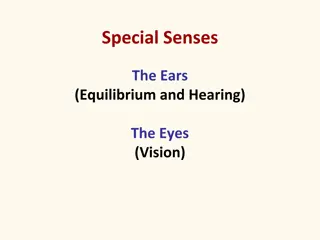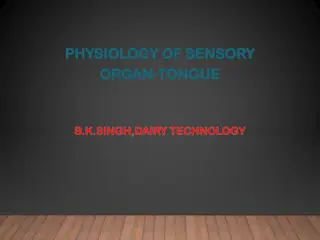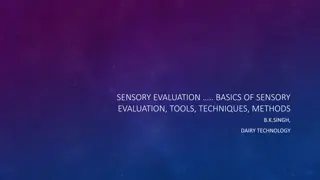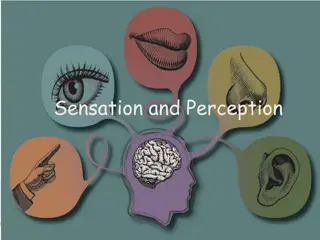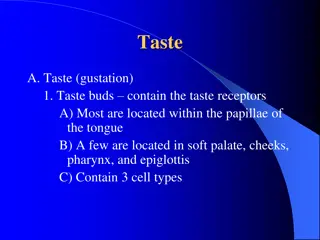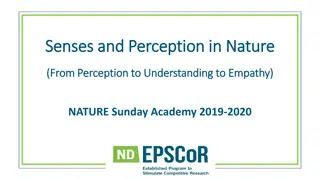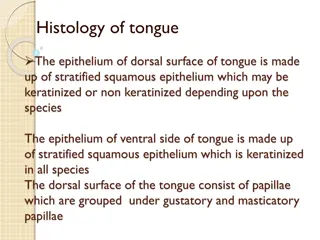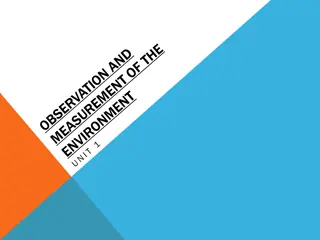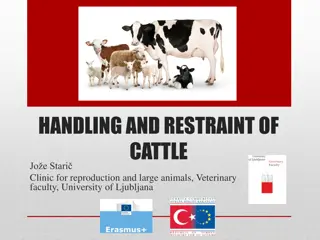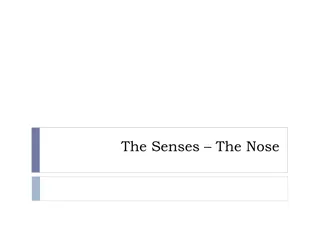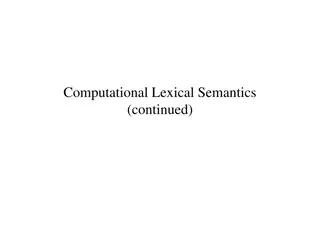Understanding Senses: Vision, Taste, Olfaction, and Audition
Explore the intricacies of human senses such as vision, taste, smell, and hearing. Delve into topics like sharpness of vision, loss of taste and smell, and the role of retinal neurons and amacrine cells. Enhance your understanding of sensory perception and the complexities of the human sensory system.
Download Presentation

Please find below an Image/Link to download the presentation.
The content on the website is provided AS IS for your information and personal use only. It may not be sold, licensed, or shared on other websites without obtaining consent from the author. Download presentation by click this link. If you encounter any issues during the download, it is possible that the publisher has removed the file from their server.
E N D
Presentation Transcript
Vision sharpness of vision 1
Vision acuity (visual) 1
Taste loss of taste 2
Taste ageusia 2
Vision retinal neurons located between the bipolar and ganglion cells 3
Vision amacrine cells 3
Olfaction loss of smell 4
Olfaction anosmia 4
Audition the area of the cortex dedicated to auditory processing 5
Audition auditory cortex 5
Audition carries auditory signals from the inner ear to the brain 6
Audition auditory nerve 6
Audition Vibrating fluid in the cochlea causes the____ to move in a wave-like fashion in response to soundwaves. 7
Audition basilar membrane 7
Vision neurons in the retina that receive visual input from photoreceptors and send output to retinal ganglion cells 8
Vision bipolar cells 8
Vision the ability to respond to visual information without conscious awareness 9
Vision blindsight 9
Vision the portion of the retina containing the optic disk and no photoreceptors 10
Vision blind spot 10
Audition hearing loss resulting from disruption of the auditory signal along its route through the brain 11
Audition central hearing loss 11
Vision A receptive field in which light hitting a particular retinal location excites a neuron, and light hitting the surrounding area inhibits it is called a ____ receptive field. 12
Vision center surround receptive field 12
Somatosensation pain-sensing receptors that respond to chemical toxins 13
Somatosensation chemical nociceptors 13
Audition a spiral-shaped structure in the inner ear containing fluid-filled canals 14
Audition cochlea 14
Audition a region of the medulla that receives input from the auditory nerve; not to be confused with the cochlea of the ear 15
Audition cochlear nucleus 15
Vision a neuron that responds to lines of specific orientations regardless of where the line appears in the visual field (c___ cell) 16
Vision complex cell 16
Audition hearing loss resulting from the inability of sound to reach the ear drum or to affect the ossicles of the middle ear 17
Audition conductive hearing loss 17
Vision the type of photoreceptor found mostly in the fovea and necessary for color vision 18
Vision cones 18
Vision and others the combining of information coming from many neurons to a smaller number of neuronal recipients (c___) 19
Vision and others convergence 19
Vision the protective outer layer of the eye 20
Vision cornea 20
Vision the neural pathway originating in layer 6 of the primary visual cortex and terminating in the LGN of the thalamus (the____ pathway plays an important role in visual attention) 21
Vision corticogeniculate pathway 21
Somatosensation the collection of cell bodies of somatosensory neurons just outside the spinal cord 22
Somatosensation dorsal root ganglia 22
Vision a group of cortical brain areas that specialize in detecting the location of objects, that is, where things are 23
Vision dorsal stream 23
Audition a piece of tissue in the middle ear that vibrates in response to sound waves, also called the tympanic membrane 24
Audition eardrum 24
Vision the central portion of the retina 25
Vision fovea 25


